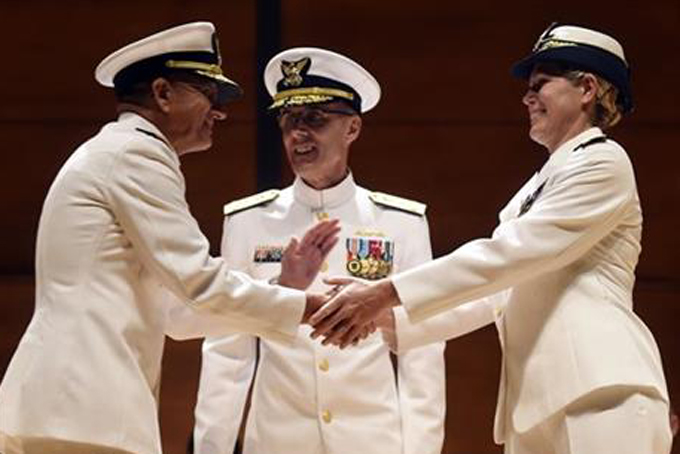
HARTFORD, Conn. (AP) _ The new superintendent of the Coast Guard Academy says its students are smart, energetic, enthusiastic _ and in some ways very different from cadets of his generation.
Rear Adm. James Rendon, who became the academy’s 41st superintendent at a ceremony last week, said in an interview that cadets today are much more engaging.
“When I was a cadet, if I saw a senior officer heading my way, I would salute smartly, and if asked a question, I would say `Yes, sir,’ or `No, sir’ or `Yes, Ma’am’ or `No, Ma’am,”’ said Rendon, a 1983 graduate of the academy in New London.
“Now if a cadet is coming my way and if they see me, they’ll give me a salute and say `Good morning, sir’ and I’ll say `Good morning, how you doing?’ And they’ll stop and tell me for the next number of minutes just how they’re doing and what they’re doing. And they’re full of questions.”
Rendon said he was spending his first week immersed in briefs on issues facing the academy, including the challenge of recruiting and retaining a diverse corps of cadets. This year’s graduating class was celebrated as the most diverse ever, with 33 percent representing minorities. But the academy has struggled to attract African-Americans, who made up less than 3 percent of the latest class.
“At the end of the day we want to reflect America as best we can,” Rendon said. “It’s always a challenge to get that diverse incoming class and then to retain that diverse incoming class on through, four years later, graduation. There’s the attracting and then there’s retaining, and we work hard on both fronts.”
The academy has roughly 900 students in its four-year program. Cadets receive full scholarships and, upon graduation, they are commissioned as junior officers with an obligation to serve five years in the Coast Guard.
Rendon is a native of San Antonio who followed an older brother to the academy on the Thames River. He served as assistant superintendent from 2010 to 2012 and his Coast Guard career took him most recently to Hawaii, where he led a task force charged with running counter-drug strategy in the Pacific.
One way the academy helps the service, he said, is by leveraging the intellectual power of the cadets and faculty to contribute to the priorities of the Coast Guard commandant. He cited the academy’s new Center for Arctic Strategy and Policy as an initiative with potential to help the service.